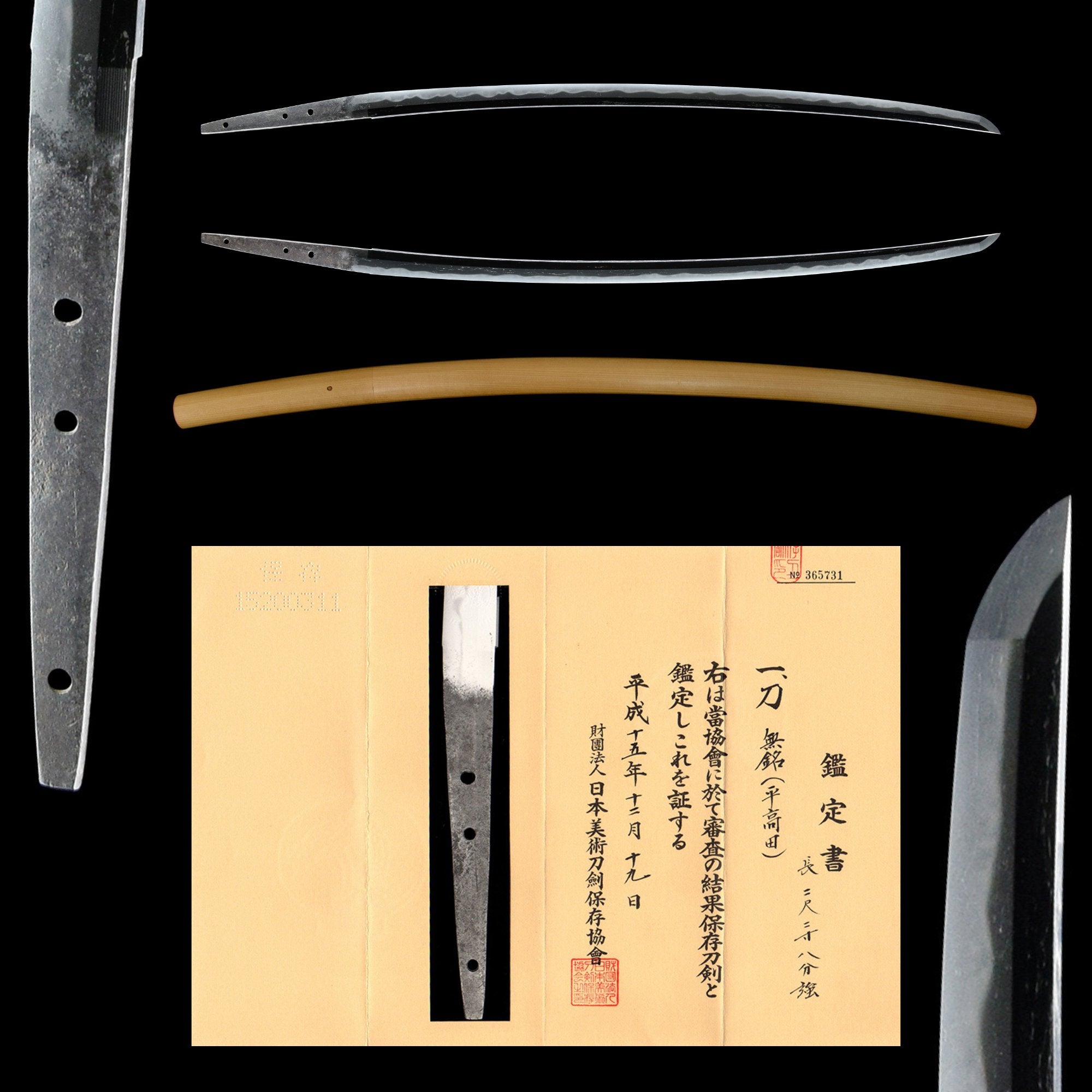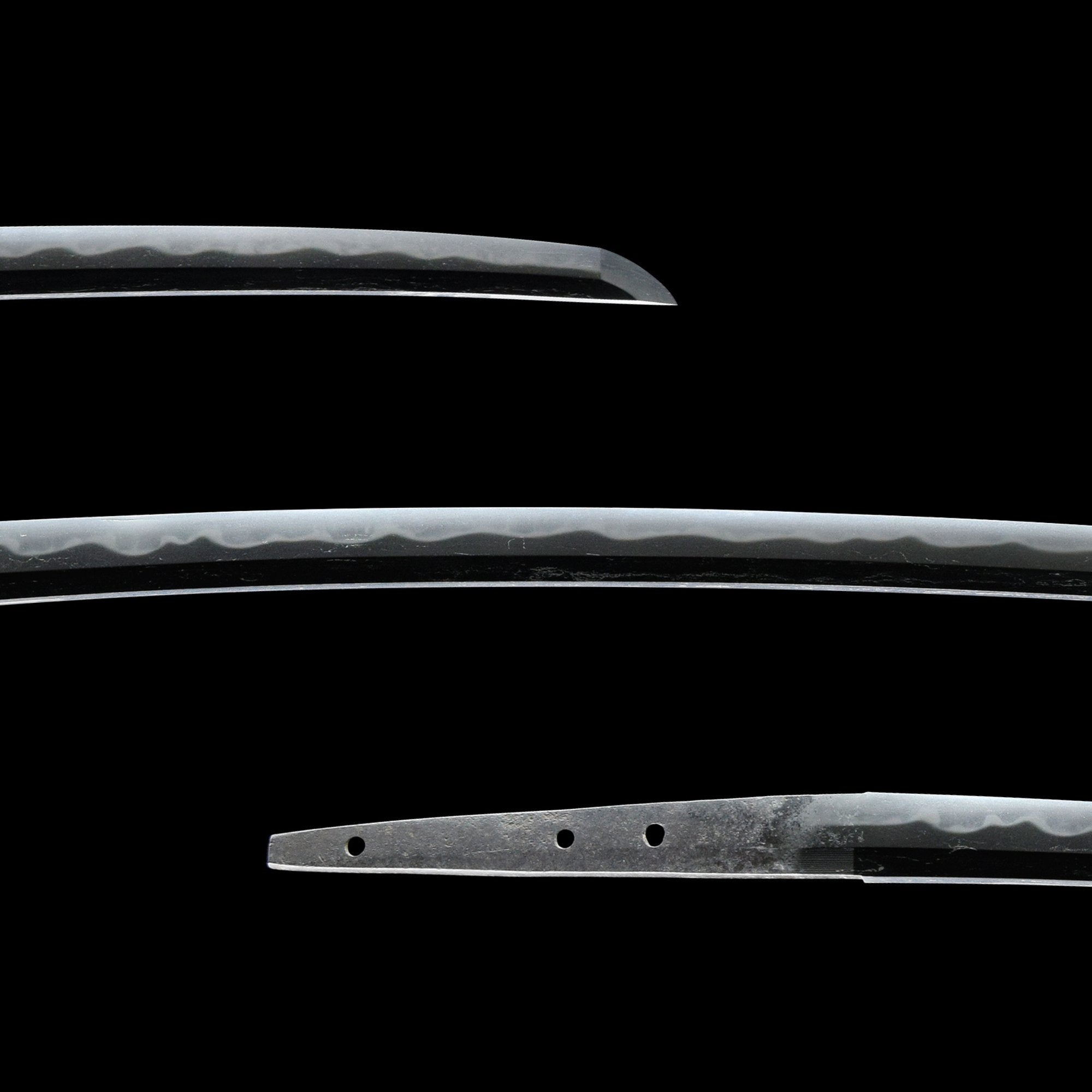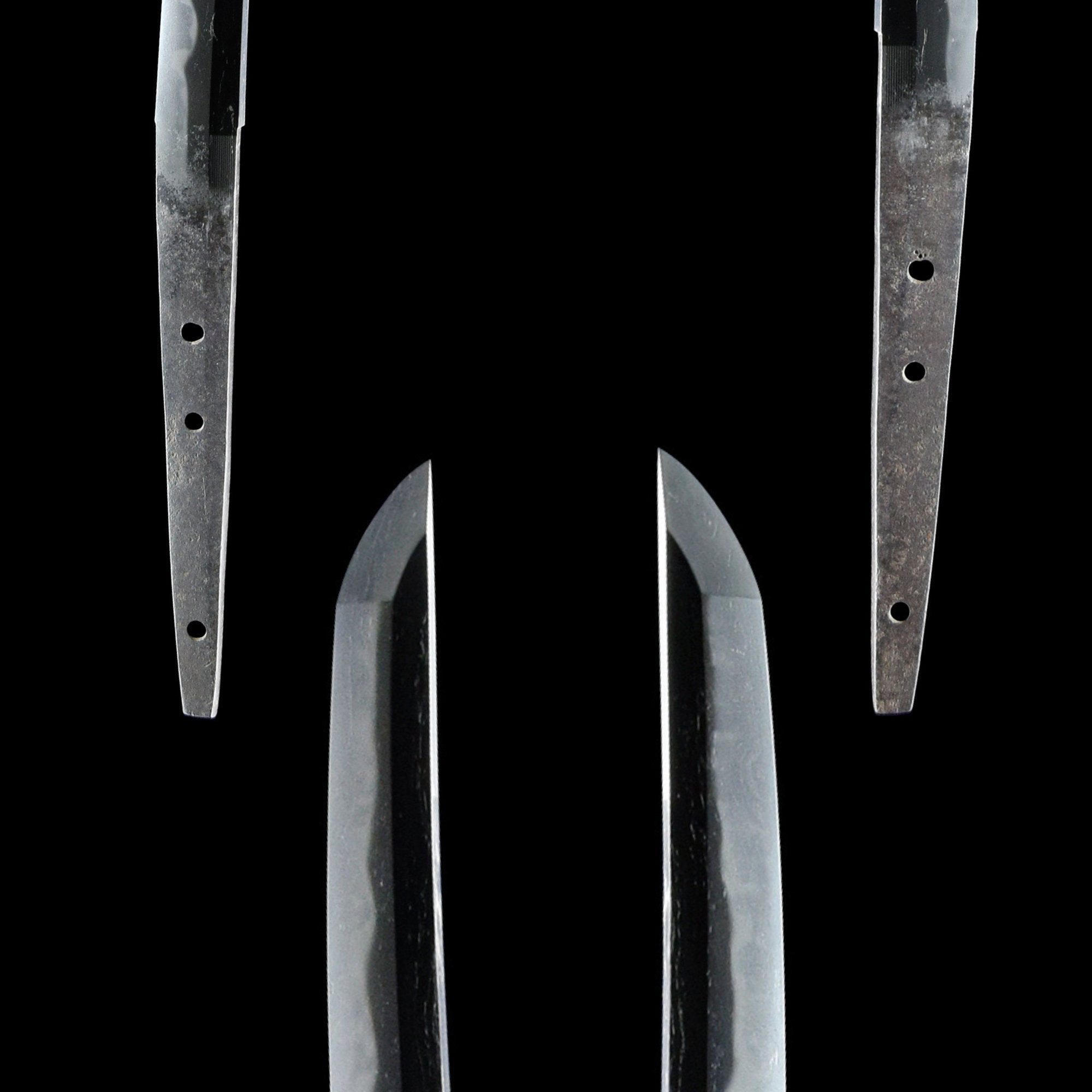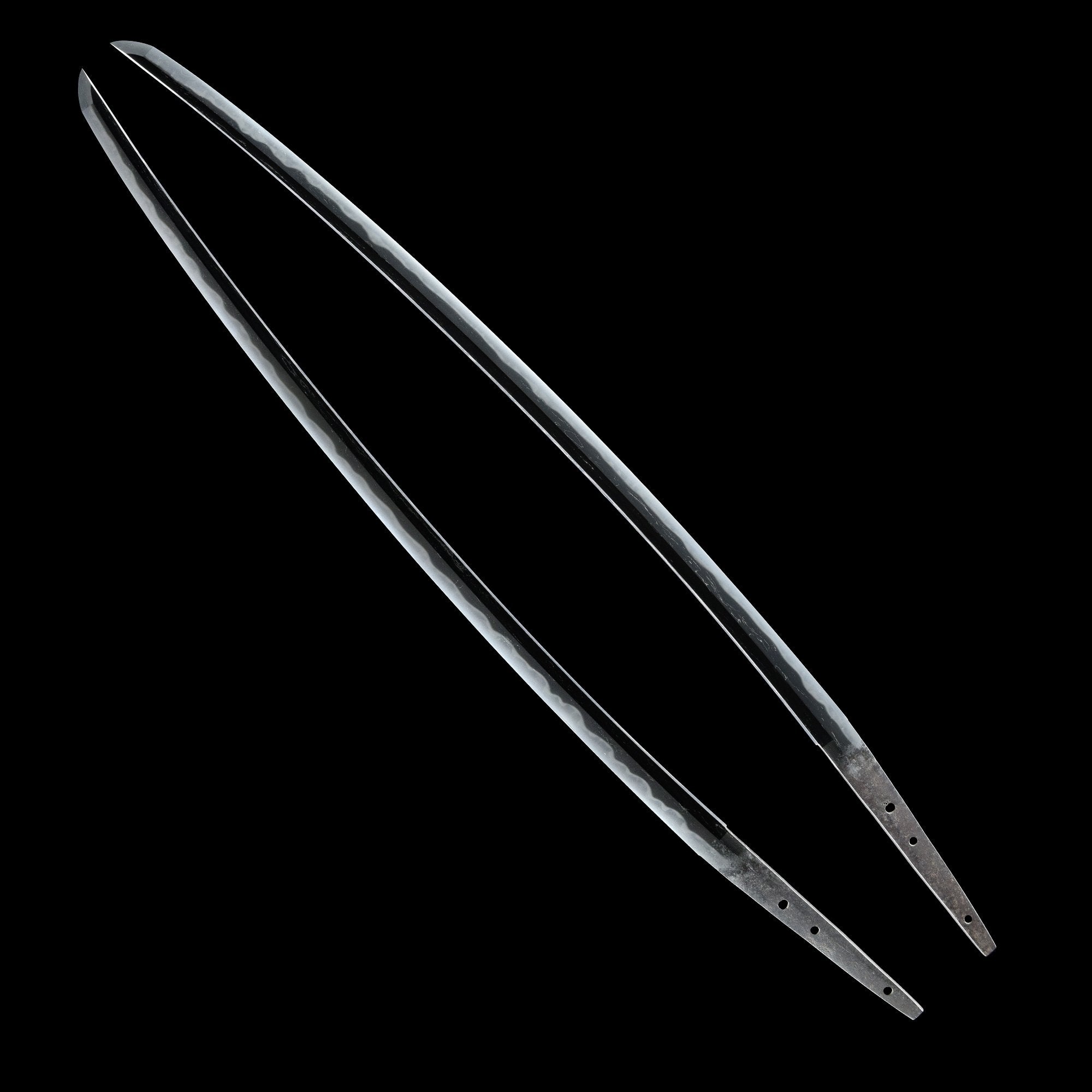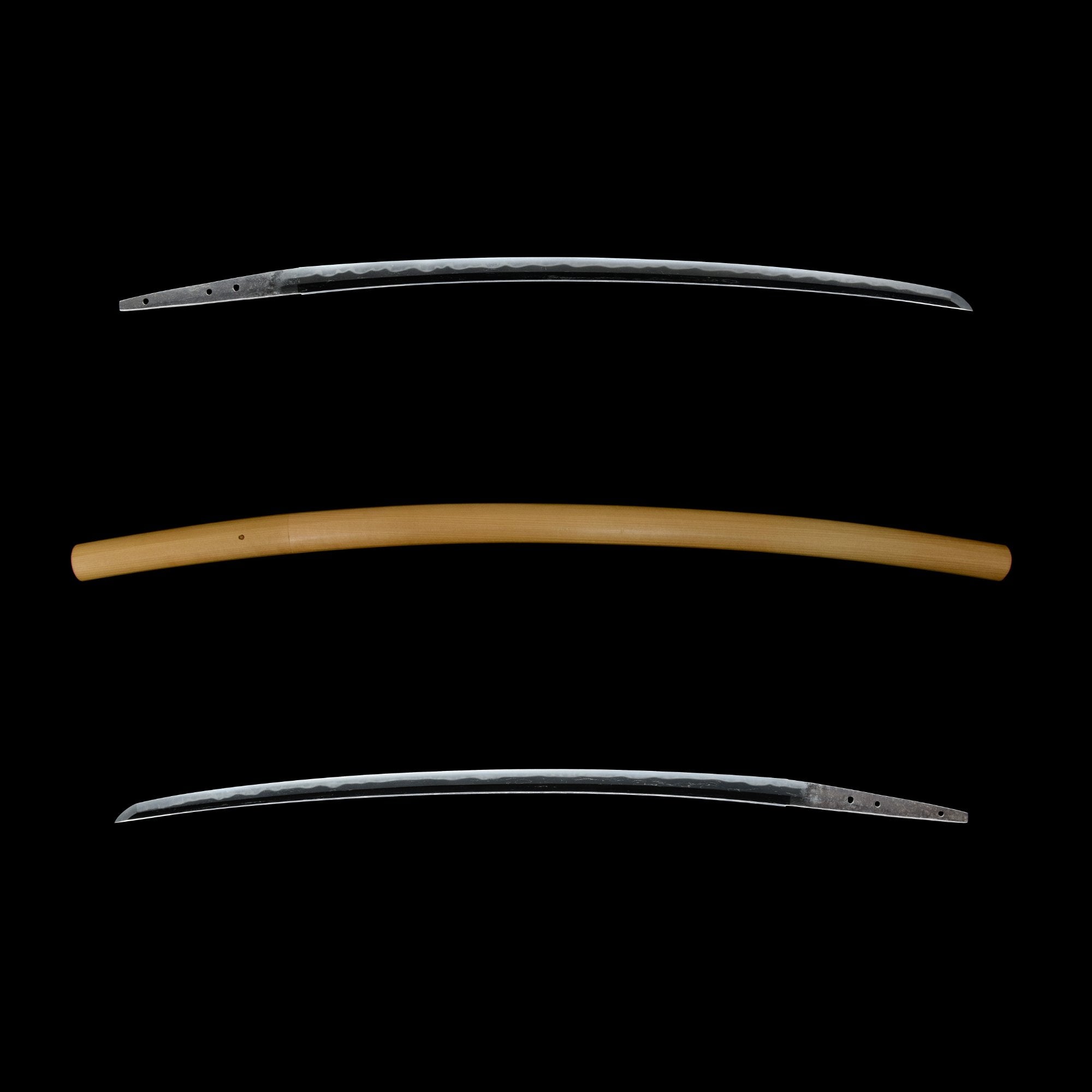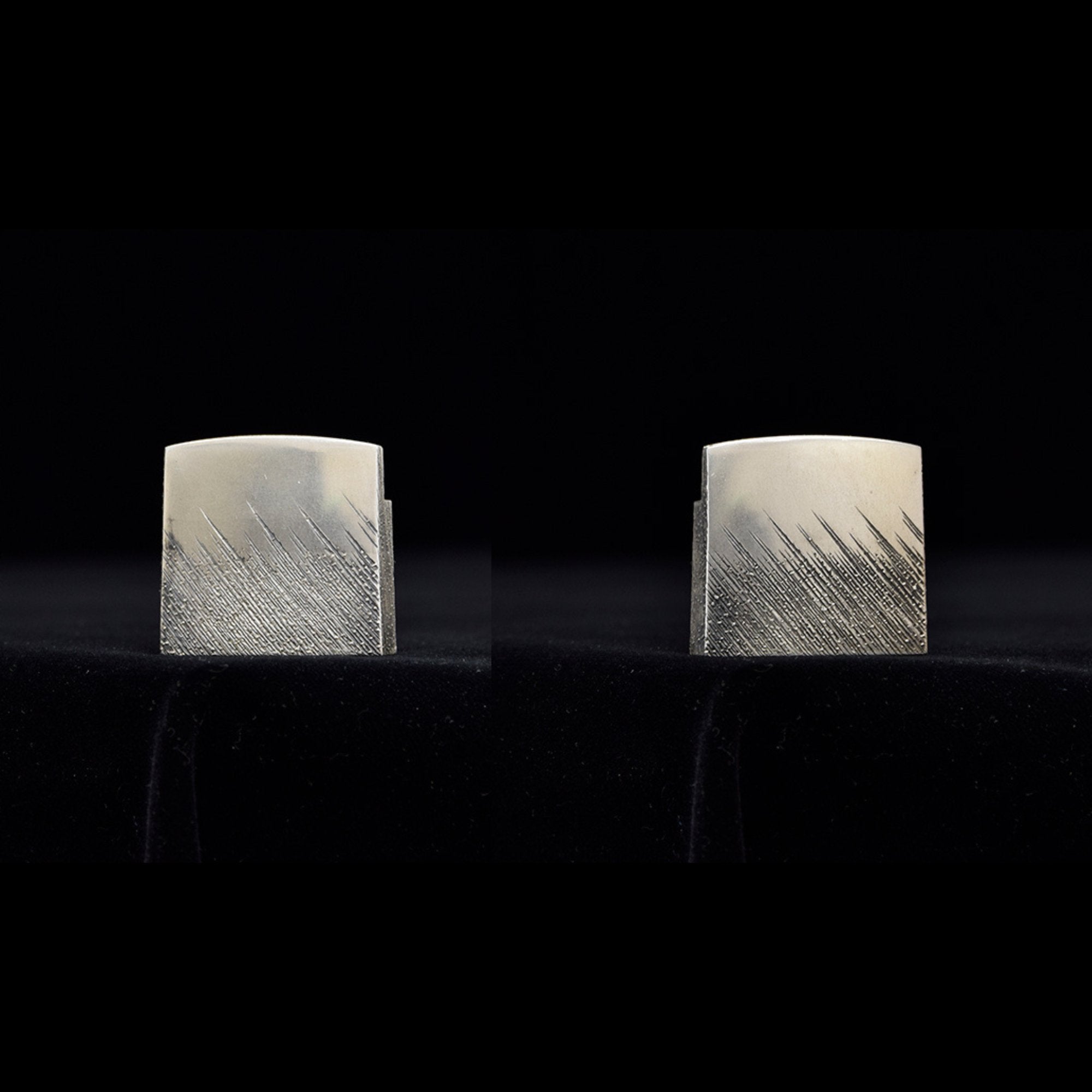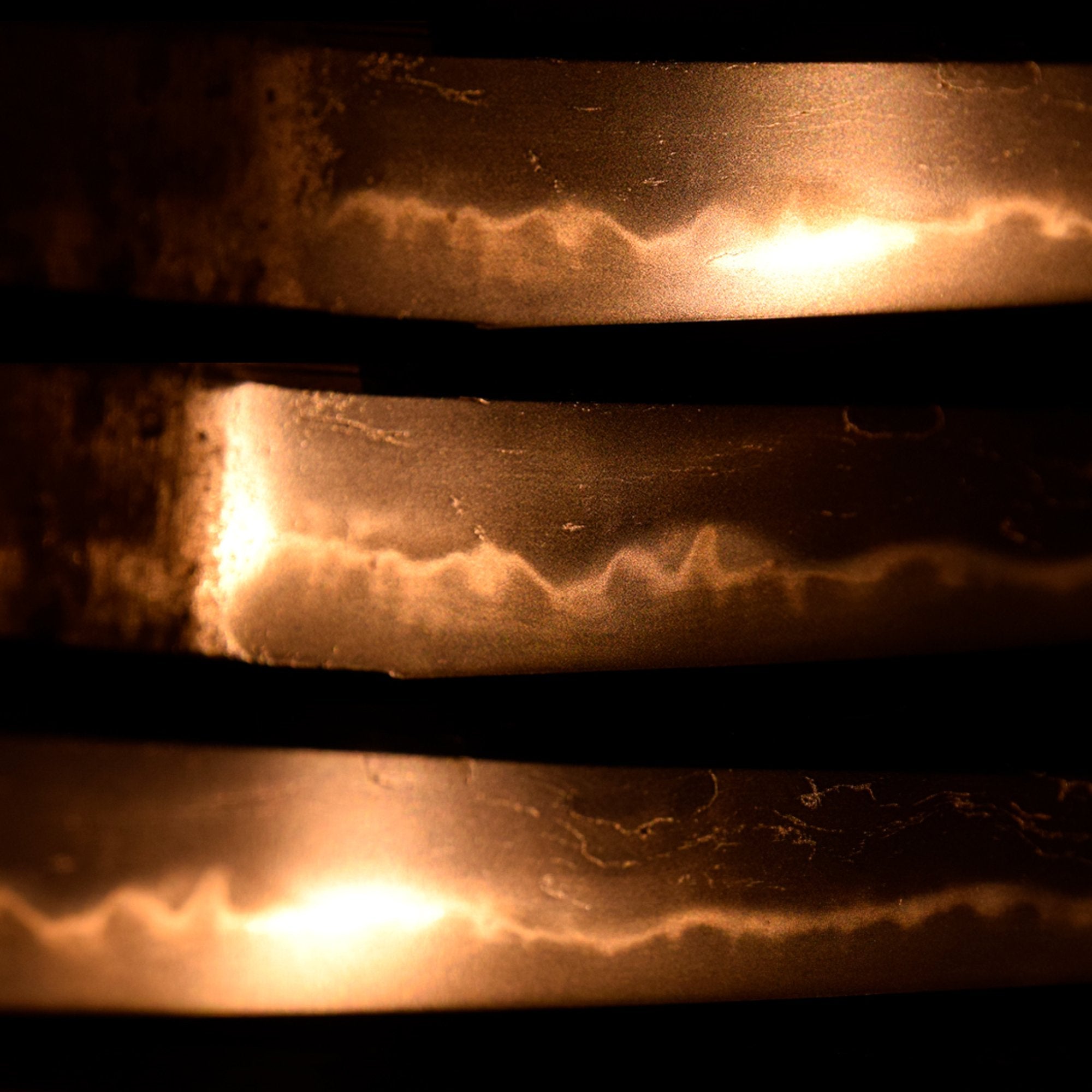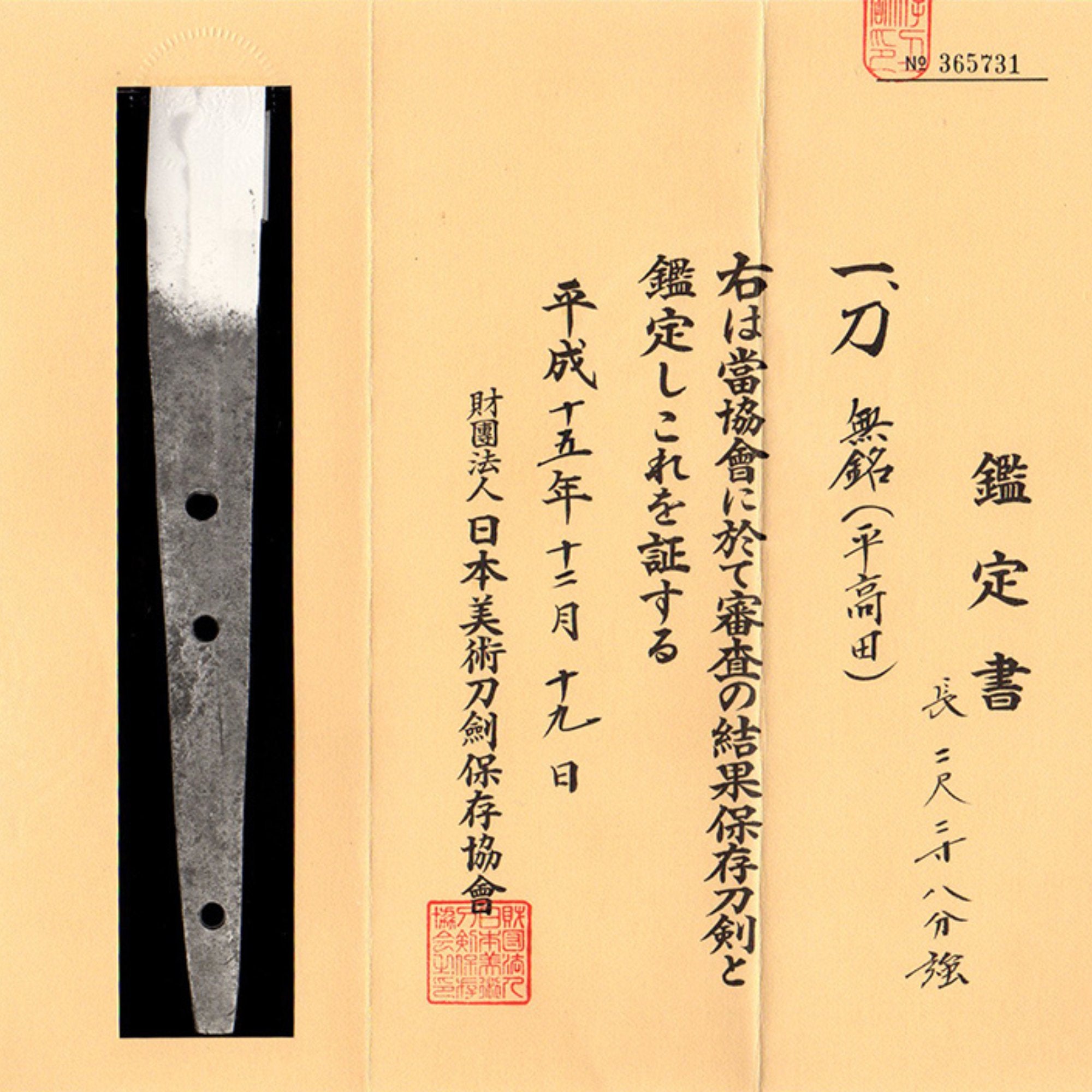Description
Authentic Nihontō Japanese Sword Katana Attributed to Tairatakada 平高田 NBTHK HOZON TŌKEN Certificate
The 南北朝時代 (Nambokucho period) 豊後高田 (Hōshū Takada school) flourished around Takada (now within Ōita City) and was founded by 友行 (Tomoyuki), a disciple of Chikuzen Sōden from the Kenmu period. During the 古刀期 (Koto period), many works bore the 平 (Taira) surname, so they were called 平高田 (Taira Takada). From the 新刀期 (Shinto period) onward, they inscribed the 藤原 (Fujiwara) surname, and thus were generally referred to as 藤原高田 (Fujiwara Takada). The school has always been highly regarded for its practical swords, which were favored by many warriors as 武用刀 (military swords).
During the Sengoku period, the school served as the official swordsmiths for Ōtomo Sorin of Bungo Province and catered to the demands of powerful families across Kyushu, achieving prosperity comparable to the Seki swordsmiths in Mino Province and the Osafune swordsmiths in Bizen Province. Their styles were broad, including Bizen and Sōshu influences, Mino-style three-peak gunome (tobiyaki), and Yamashiro-style swords with koshi-zori and suguha. In the Shinto period, the school was centered in Takada, but also had forges in places like Kokura in Buzen and Nakatsu in Bungo.
This sword, though shortened, still retains its strong stance. Over time, the tang (茎, nakago) has been shaved on the mune side to reduce the overall curvature, enhancing its cutting power. Upon closer inspection, traces of a signature can be seen on the tip of the tang. While the Nihon Bijutsu Token Hozon Kyokai (日本美術刀剣保存協会) has classified this as 平高田 (Taira Takada), I personally believe it might be a work of 冬廣 (Fuyuhiro).
The steel (地鉄, jigane) has a flowing itame grain, well-forged and tight, with beautiful ji-nie. However, it shows some rough patches and large grain. The hamon is a bright and clear gunome-midare, with prominent ashi and ha, showing sunagashi and small irregular patterns. Towards the tip, the hamon becomes finer and more complex, mixing choji and gunome-choji, and the back side of the blade has a hitatsura-like pattern. The boshi is fully tempered with a rounded return.
This sword, which had rusted, was polished, fitted with a white scabbard (白鞘, shirasaya), and had a new habaki made by our shop. The previous owner took great care of it, so even 20 years after polishing, it remains in excellent condition, almost like newly polished. The polishing is of the highest quality. The balance is very good with the center of gravity close to the handle, making it easy to wield. It is an excellent piece for pure artistic appreciation.
Bare weight: 633 grams.
Nihontō Information
| Name 名称 | 無銘(平高田) - Mumei (Tairatakada) |
| Blade Length 刀長 | 二尺二寸八分七厘強 / 69.32 cm |
| Sori 反り | 六分九厘弱 / 2.1 cm |
| Blade Width 元幅 | 28.5 mm |
| Blade Thickness 元重 | 6.5 mm |
| Tip Width 先幅 | 物打21.7 mm 横手位置17.6 mm |
| Tip Thickness 先重 | 物打4.9 mm 松葉位置3.6 mm |
| Mekugi-ana 目釘穴 | 3個 |
| Age 時代 | 室町後期 The latter period of Muromachi era (16th century) |
| Certificate 鑑定書 | 保存刀剣鑑定書(NBTHK HOZON TOKEN Certificate) |
| Registration 登録 | 平成11年12月17日 奈良県登録 Registered on December 17, 1999 in Nara Prefecture |
| Included 附属 | 銀はばき (Silver Habaki) |
| 白鞘 (Shirasaya Case) | |



